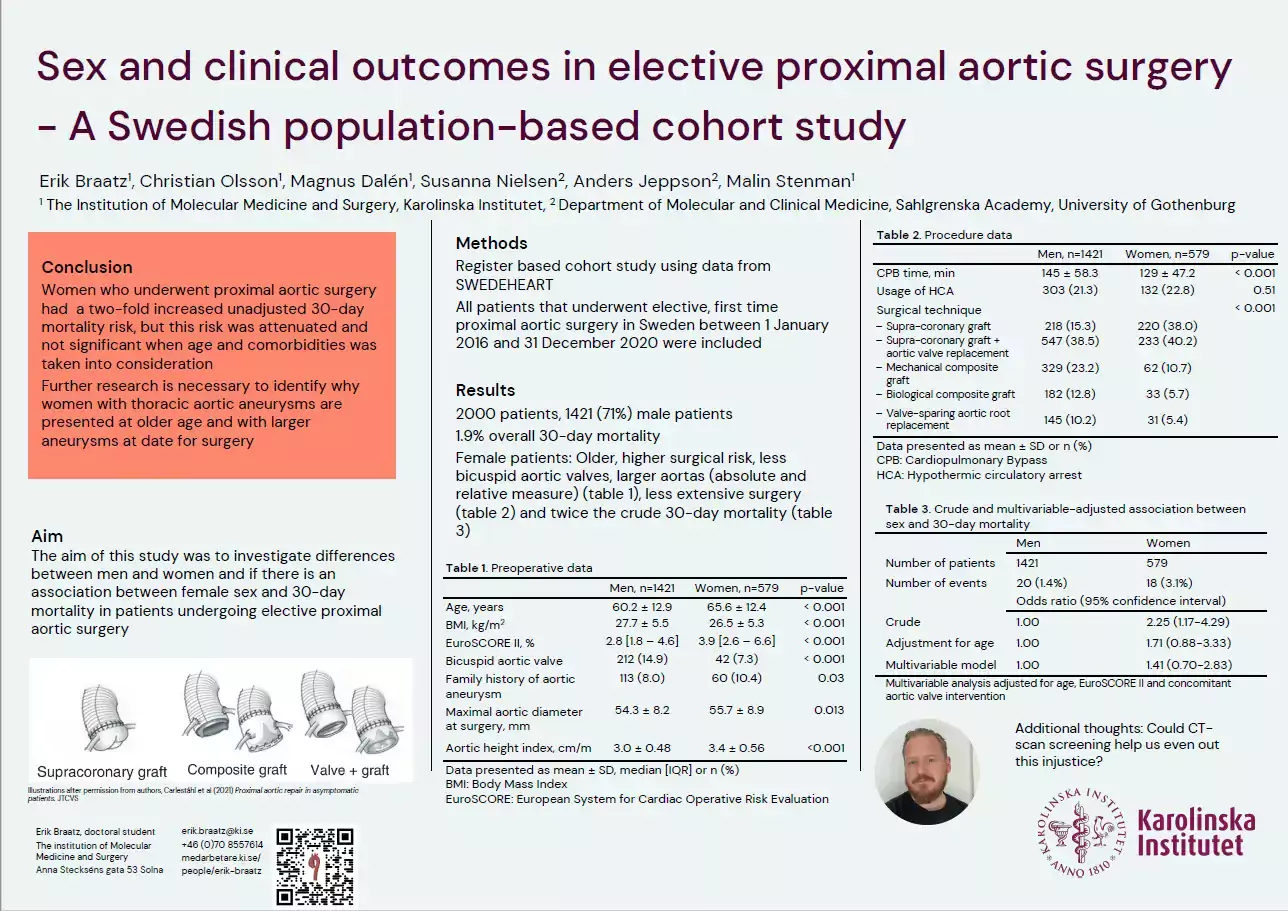Poster 1 - Erik Braatz, Thoracic Surgery
MMK Department's Day 2024

Erik Braatz, Thoracic Surgery
Title: Sex and clinical outcomes in elective proximal aortic surgery – A Swedish population-based cohort study
Summary
The impact of sex is an important topic in cardiovascular surgery, and to this day not fully understood. Women account for approximately 30% of all patients with thoracic aortic aneurysm (TAA) but have significantly higher risk of developing aortic dissections or aortic ruptures compared to their male counterparts with comparable co-morbidities. Surgical repair is the only treatment available to prevent progress and a possible fatal turnout. In this study the aim was to investigate differences preoperative differences between the sexes and if there were an association between female sex and 30-day mortality in patients undergoing elective proximal aortic surgery.
With the help of data from SWEDEHEART all patients (n=2000) who underwent first time, elective proximal aortic surgery in Sweden from 2016-2020 was identified. In this cohort 71% were men. Baseline data revealed that the female patients were older, had a higher surgical risk and larger aortic measurements at time of surgery compared to men. Procedural data showed that men had longer times of surgery and underwent more advanced surgical interventions compared to women. A logistic regression examined the association between female sex and 30-day mortality and found the risk to be more than twice as high in females (OR 2.25 (CI 95% 1.17-4.29)) in a crude analysis. This association was however no longer significant when age and comorbidities was taken in account.
In conclusion, female patients undergoing elective proximal aortic surgery had twice as high crude risk to die within 30 days from surgery compared to men, however after adjustments no significant association was found. The reasons that women are presented at older age and with larger aneurysm compared to men at time of surgery remains to be discovered. Low-dose CT scan screening could have the potential to discover more patients with TAA.
